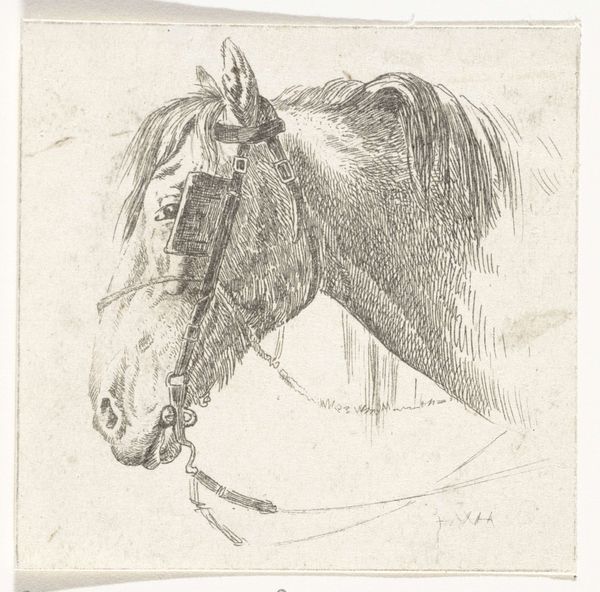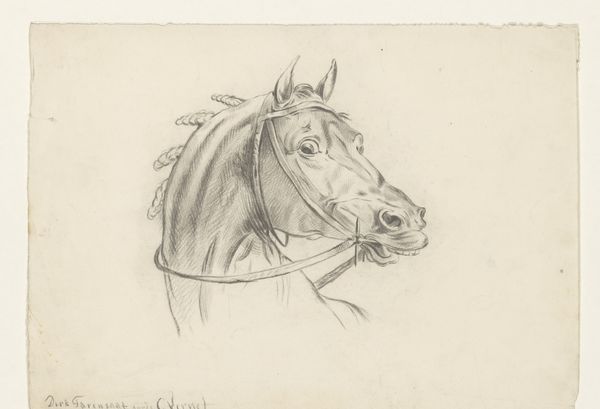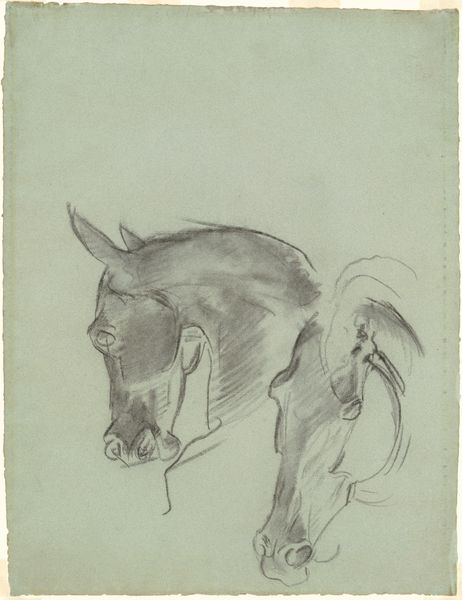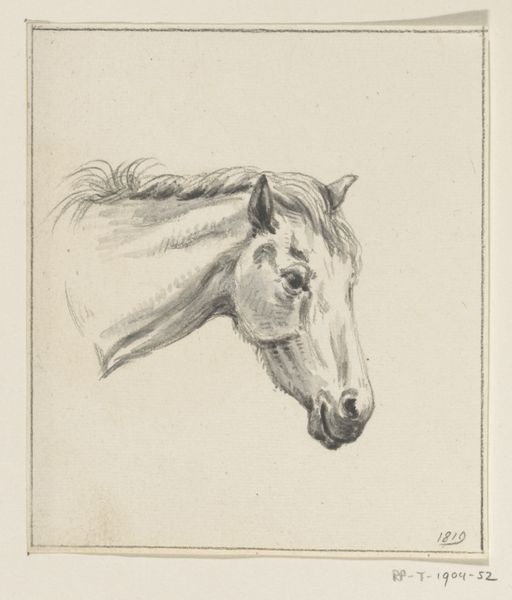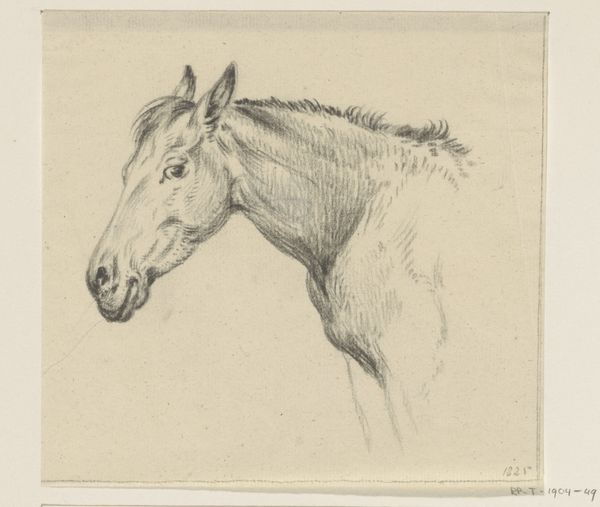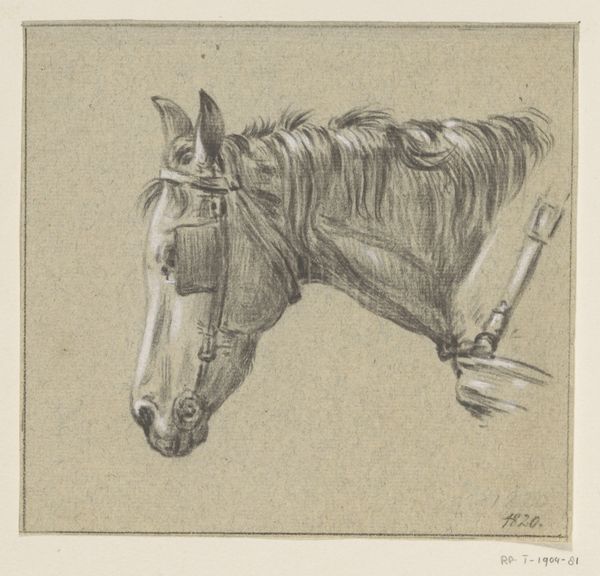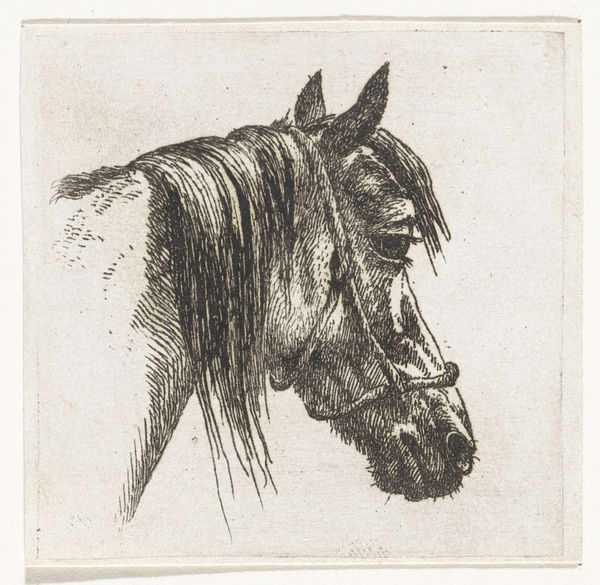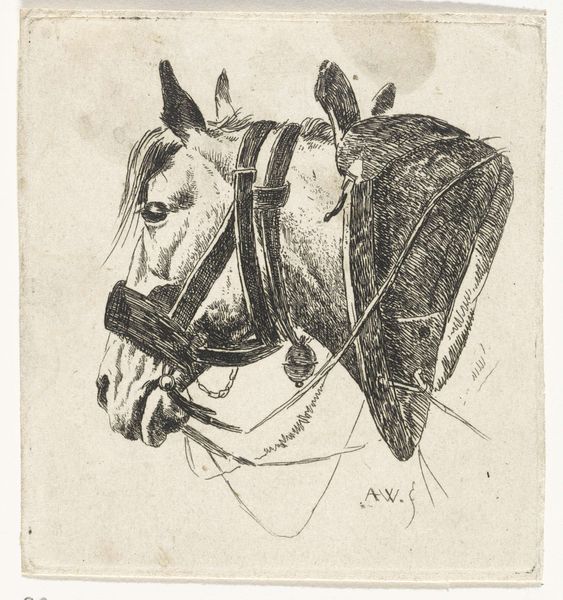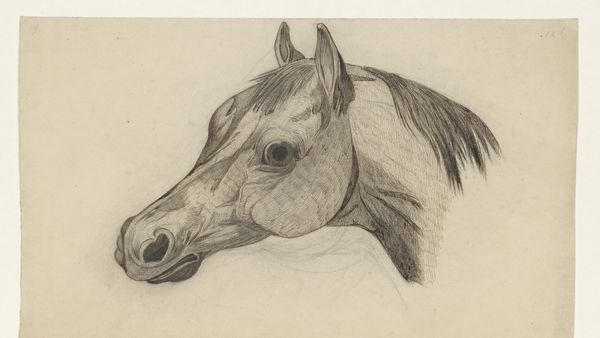
Copyright: National Gallery of Art: CC0 1.0
Editor: Here we have "Old Horse," created by Henri de Toulouse-Lautrec in 1897. It’s a pencil drawing, and feels quite intimate. What I find striking is its delicate depiction of aging. What can you tell me about this piece? Curator: Well, consider Lautrec's world. He operated within a society deeply fascinated and often complicit with displays of power. In that context, a work like this can be seen as subversive. It's a portrayal of an animal, past its prime, maybe used and discarded. Editor: So you're suggesting that by depicting an "old horse," Lautrec might be subtly critiquing the way society treats beings it deems no longer useful? Curator: Precisely. Think about the patrons who commissioned art at that time - they preferred portraits aggrandizing their wealth and status, not an aged working animal. What statement do you think Lautrec was trying to make in representing a subject considered not aesthetically valuable at the time? Editor: That’s a really compelling perspective! I guess by focusing on the horse, he's shifting our gaze to those typically ignored by mainstream artistic circles. Curator: Absolutely. He's engaging with social dynamics by representing a subject that powerful patrons may have seen daily, but didn't consider important enough to memorialize. It gives agency, almost dignity, to this forgotten figure. Editor: I’m understanding that images have consequences in society. It is really powerful that his work captures an untold reality and presents new perspectives to society. Curator: And, as the French sociologist Pierre Bourdieu taught us, these choices in subject matter play into art as a field of social positioning. Editor: Thank you, it has really expanded my understanding of how context is so critical to analysing art. Curator: And hopefully made you question the stories we often accept at face value.
Comments
No comments
Be the first to comment and join the conversation on the ultimate creative platform.

